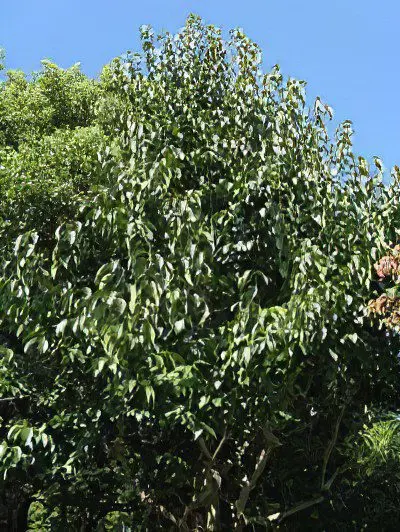Contents
Useful properties and application of eucommia tincture
Description of eucommia

Eucommia – a dioecious deciduous tree with gray-brown bark, has a lush, dense, rounded crown and leaves similar to nettle leaves. Roots, leaves and bark of branches are streaked with milky passages, which contain a viscous, viscous white juice – gutta-percha. The plant blooms in April-May with flowers without sepals and petals, collected in inflorescences. The fruits ripen in October-November. The homeland of the plant is Asia, namely China. Eucommia is grown in the Caucasus, in the Crimea, Abkhazia, Moldova and the Krasnodar Territory.
Useful properties of eucommia
The bark is used as a raw material for various needs. A large concentration of gutta-percha is observed in spring, during the active movement of juice in the trees. The leaves contain caffeic acid, aucubin, chlorogenic acid. The presence of tannin and quinic acid in the plant was determined. The chemical composition also contains an iridoid glycoside, lignans (pinoresinol and its glucosides).
The bark is rich in ash, magnesium, strontium, potassium, calcium, and iron. Of the trace elements, manganese, copper, zinc, cobalt, molybdenum, sulfur and many other substances were found in it. Eucommia has a hypotensive, tonic and stimulating effect on the human body.
Application of eucommia
The medicinal properties of eucommia were known and used by Tibetan and Chinese medicine at the dawn of our era. Even then they knew that it was useful to apply steamed bark to fractures: when solidified, the crushed mixture tightly covered the desired area of the body. Inside, they took an infusion of the bark, which positively affects the rapid healing of fractures. Nowadays, the infusion is used for gout, diseases of the kidneys, spleen. Washing with infusion of wounds promotes their disinfection and rapid healing.
In Abkhazia, decoctions of eucommia are popular for cardiosclerosis and swelling of the legs. Bark tincture is recommended for the treatment of hypertension, regulation of metabolism. The remedy strengthens the liver, cleanses of toxins and renews the blood formula, lowering cholesterol levels, removes toxins from the intestines, and enhances urine output. Eucommia, when consumed in small amounts, stimulates the central nervous system. If the dose is increased, the plant has a calming effect. These properties also contribute to the use of the tree in official medicine.
Eucommia tincture: 200 g of coarsely chopped bark is poured into 30-degree alcohol. It turns out a liquid of dark brown color with a peculiar smell, sweetish in taste. It should be taken 15-20 drops 3 times a day with water.
Eucommia vyazolistny
In the wild, Eucommia is found only in Asia and the East. In the CIS countries, it is cultivated as a coppice bush plant with a height of 3 to 3,5 meters, with a huge number of shoots. There are special sites in the Krasnodar Territory and in Moldova, where trees are grown for medical purposes. Studies have shown a long-term hypotensive effect of the plant, an increase in heart activity and analgesic properties have been established when using eucommia products.
A decoction of eucommia: you need to take 10 g of eucommia bark in 1 glass of water, boil in a sealed container for 10-15 minutes, leave for 4 hours, strain. You need to take the composition 1 tablespoon 3 times a day for gout.
Contraindications to the use of eucommia
The only contraindication is the individual intolerance of this plant.









